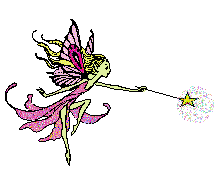En la mitología maya Ix Chel (pronunciado [iʃ'tʃel]) era diosa del amor, de la gestación, de los trabajos textiles, de la luna y la medicina. Es esposa del dios solar y en los códices se identifica con la diosa I. En algunas ocasiones se le representaba acompañada de un conejo. Una de sus advocaciones era considerada maléfica, y se le representó en los códices, como una mujer vieja, vaciando los odres de la cólera sobre el mundo. En textos jeroglíficos su nombre es Chak Chel (arco iris grande), en el Chilam Balam su nombre es Ix Chel (mujer arco iris).
IX CHEL
En la mitología maya Ix Chel (pronunciado [iʃ'tʃel]) era diosa del amor, de la gestación, de los trabajos textiles, de la luna y la medicina. Es esposa del dios solar y en los códices se identifica con la diosa I. En algunas ocasiones se le representaba acompañada de un conejo. Una de sus advocaciones era considerada maléfica, y se le representó en los códices, como una mujer vieja, vaciando los odres de la cólera sobre el mundo. En textos jeroglíficos su nombre es Chak Chel (arco iris grande), en el Chilam Balam su nombre es Ix Chel (mujer arco iris).
Lady of the rainbows,
dweller in the moist realms,
Lady of the moon, who
pours the waters
Of nourishment onto the
earth, Ix Chel.
Ix
Chel (pronounced eesh-shell) is the Mayan goddess of fertility and childbirth,
water, weaving, the moon and medicine. She reigned supreme through out the
Yucatian Peninsula for more than a thousand years. She is titled the Queen, Our
Mother, the White Lady and the Goddess of Becoming.
The
Maya connected her with the phases of the moon, which influenced events in the
lives of the people. She is sometimes depicted sitting in a crescent moon with a
rabbit, since the ancients thought that the marks on the moon resembled a rabbit
or hare. Like other moon goddesses elsewhere, she has three aspects,
encompassing the maiden, mother and crone. As the young maiden, she is shown
with long flowing hair and full breasts, embodying the promise of youth. In her
full moon aspect, she is the mother who governs childbirth, protects expectant
mothers, and forms the facial features of babies while they are still in the
womb. As the crone, she is shown as a grimacing hag with a skirt made of bones.
Hunchbacked and wrinkled, she pours the waters of the world from a gourd held in
her hands. It is she who will bring the deluge that ends the world. Her serpent
head-dress represents her powers of transformation from the winter hag to the
renewed maiden of spring. Like the snake, she sheds her winter skin in order to
emerge transformed.
Except for Hunab Ku, all the other Mayan gods are the offspring of Ix Chel and
her husband the sun Itzamnà, the god of science. Once Ix Chel was killed by her
grandfather who hurled lightening at her when she became the Sun's lover, but
thirteen dragonflies sang over her for thirteen days, until she was fully
recovered. But the sun grew jealous of the goddess, and accusing her of having a
lover: his brother, the morning star; he threw Ix Chel from heaven. She found
sanctuary with the vulture deity, but the Sun grew sorry for his behaviour and
begged her to come home. However, it wasn't long before he grew jealous again
and took her brilliance away, leaving her with only a silvery light. Disgusted
with his behaviour she left him, and spends every night wandering about just as
she wishes, making herself invisible whenever he comes near.
The moon draws moisture and controls the tides, making Ix Chel the goddess of
water. She has an assistant sky serpent, which carries all of the waters of the
heavens in its belly. Ix Chel controls the nourishing rains and the destructive
flooding river, the crystal clear rivers, and the muddy deluge. All water
belongs to her, whether it nourishes, cleanses or destroys. In this capacity,
she is "Lady Rainbow", dwelling in the moist realm of sparkling waters, mist and
rainbows. She holds the sacred womb jar upside down so that the waters of
creation can be ever flowing. The Temple of the Frescoes at Tulúm, dating from
about 1450 CE has a painting showing the goddess Ix Chel holding two small Chacs
or rain deities. The central theme of these murals is fertility, death and
rebirth. Among the fertility symbols are water lilies. Water is essential to
supporting life, making her a goddess of abundance and fruitfulness.
Her
sacred bird is the swallow, and her sacred island was called the Island of
Swallows [now Cozumel]. Her shrine there was much visited, with Mayan women
travelling long distances in canoes and walking the white stone roads to honour
her. It was still active when the Spaniards first arrived in 1518-19 CE.
Ix
Chel was associated with many feminine skills and female activities. Important
among these was medicine and healing, since she was accounted the mother of all
the healing plants with knowledge of their properties. She comforts those who
are ill or in pain. She is the patroness of weaving and decorating cloth,
which were highly valued skills throughout central and south America. It was
customary to hold weaving tools over a baby girl's head soon after she was born,
to ensure that she would become a good weaver.
She
ruled pregnancy and childbirth and women often carried protective amulets of Ix
Chel to ensure a safe birth. It was believed that during a lunar eclipse
pregnant women were under threat, as Ix Chel had withdrawn her protection.
Ix
Chel is a goddess who rules the cycles of life and its creative phases. She
gives new life and keeps the bones and souls of the dead.
Ix
Chel is a triple goddess with aspects as waxing moon and spring maiden, full
moon and pregnant fertile mother, and the barren crone of winter who keeps the
souls of the dead. The power of the Ix Chel draws the tides of the ocean, brings
the nourishing rain, flows freely as the streams and rivers of the earth and
falls as the tears of women. She nurtures the baby in the amniotic fluid of the
womb. Her bounty pours freely through the world, sometimes ebbing, sometimes
flowing, each in its phase and turn, each in its time and season. Each thing
must end at its appointed time. It is foolish to try to fight this natural flow.
All faces of women are the faces of the goddess, all equally holy and equally
beautiful.
Suscribirse a:
Enviar comentarios (Atom)


















No hay comentarios:
Publicar un comentario